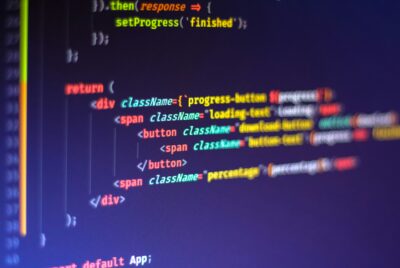Optimizing Game Performance Through Code Tweaks
Optimizing Game Performance Through Code Tweaks”
In the world of game development, we constantly strive to provide the best possible experience for players, which means optimizing game performance is key. This often involves digging deep into the code, identifying bottlenecks, and making precise tweaks to enhance efficiency. From memory management to rendering optimizations, each adjustment helps in reducing lag, cutting down load times, and ensuring smoother gameplay. In this article, we explore effective strategies and techniques to optimize game performance through targeted code modifications, ultimately delivering a seamless and enjoyable player experience. How do you optimize game performance through code? It’s a question that many game developers ask themselves. We’ve all been there—our game looks fantastic, but it lags, freezes, or crashes at the worst possible moments. Fortunately, optimizing game performance isn’t as mystifying as it may seem. With some strategic code tweaks, we can boost our game’s performance, ensuring smoother gameplay and happier players.
Understanding Game Performance
Before diving into the specifics of code optimization, let’s first understand the fundamentals of game performance. Game performance hinges on various factors, from the hardware it runs on, to the code that powers it.
Frame Rate and Latency
Frame rate, measured in frames per second (FPS), indicates how many frames our game engine can render every second. Higher FPS results in smoother visuals. Latency, on the other hand, is the delay between input and action. Low latency is essential for responsive gameplay.
Resource Management
Efficient use of resources like CPU, GPU, and memory is critical. If our game hogs too many resources, it will suffer regardless of the hardware. It’s crucial to balance resource loads to ensure stability.
Rendering and Optimization
Rendering involves converting code into visual output. Optimization in this context means refining the rendering process to enhance performance. We can optimize rendering by reducing the complexity of scenes, using efficient algorithms, and minimizing draw calls.
Profiling and Benchmarking
To tackle performance issues, we first need to identify them. Profiling and benchmarking are diagnostic techniques that provide insights into our game’s performance.
Profiling Tools
Profiler tools help us understand where our resources are being used. By analyzing CPU, GPU, and memory usage, we can identify bottlenecks. Popular profiling tools include:
| Tool | Platform | Description |
|---|---|---|
| Unity Profiler | Unity | Built-in tool for monitoring performance in Unity |
| Unreal Insights | Unreal Engine | Built-in analysis tool for Unreal Engine |
| RenderDoc | Cross-platform | Graphics debugger for Windows, Linux and Android |
Benchmarking
Benchmarking involves running our game under controlled conditions to measure its performance. It helps us set a baseline and compare the effects of our optimizations. When benchmarking, we should consider various hardware configurations to ensure broad optimization.
Code Optimization Techniques
Now that we’ve identified performance issues, let’s dive into specific code optimization techniques that can enhance our game’s performance.
Optimizing Algorithms
The algorithms we use directly impact performance. We should always strive to implement the most efficient algorithm suitable for our needs.
- Big O Notation: Understand the time complexity of algorithms. Opt for O(log n) or O(1) algorithms when possible.
- Data Structures: Choose appropriate data structures. For instance, using a hash table instead of a list for lookups can significantly boost performance.
Memory Management
Efficient memory management can prevent issues like memory leaks and fragmentation.
- Pooling: Object pooling reduces the overhead of creating and destroying objects by reusing them.
- Garbage Collection: Manage and minimize garbage collection pauses by reducing the number of allocations.
Multithreading
Multithreading can improve performance by parallelizing tasks. However, it adds complexity and potential issues like race conditions.
- Task Allocation: Spread workload across multiple threads to balance CPU usage.
- Synchronization: Use synchronization mechanisms like mutexes and semaphores to avoid data corruption.
Rendering Optimization
Rendering bottlenecks often stem from draw calls and shader complexity.
- Batching: Grouping multiple objects into a single draw call reduces overhead.
- Level of Detail (LOD): Use lower-detail models for distant objects to save resources.
Network Optimization
For multiplayer games, network performance is crucial.
- Efficient Protocols: Use lightweight protocols like UDP for real-time communication.
- Data Compression: Compress data before transmission to reduce bandwidth usage.
Common Pitfalls and Solutions
Let’s explore common pitfalls in game development and how to address them.
Overdraw
Overdraw occurs when multiple layers of pixels are rendered but not visible. This often happens with transparent objects.
Solution: Minimize transparency layers and sort objects to render opaque ones first.
Excessive Physics Calculations
Physics calculations can be CPU intensive, especially in complex scenes.
Solution: Use simplified collision shapes and reduce the number of active physics objects where possible.
Improper Asset Management
Improperly managed assets can bloat memory usage and slow loading times.
Solution: Optimize asset size and format, and load assets asynchronously when possible.
Lack of Caching
Redundant calculations can waste CPU cycles.
Solution: Implement caching strategies to store and reuse frequent calculations.
Real-World Examples of Optimizations
To better understand how these optimizations come into play, let’s look at some real-world examples.
Case Study: Optimizing a Racing Game
In a racing game, we noticed significant frame drops when multiple cars were on screen, causing poor player experience.
Optimization Steps:
- Profiling: Used Unity Profiler to identify that CPU usage spiked during physics calculations.
- Algorithm Optimization: Implemented a more efficient collision detection algorithm.
- Rendering Optimization: Reduced the polygon count of car models and implemented LOD.
Result: Achieved a stable 60 FPS, offering a much smoother player experience.
Case Study: Enhancing an Online Multiplayer Shooter
In an online multiplayer shooter, lag spikes during intense firefights were making the game unplayable.
Optimization Steps:
- Profiling: Network diagnostics revealed high latency due to heavy data packets.
- Data Compression: Implemented data compression techniques to reduce packet size.
- Task Allocation: Offloaded some CPU-intensive tasks to worker threads.
Result: Reduced lag spikes significantly, improving gameplay fluidity.
Advanced Optimization Techniques
Once we’ve tackled the basics, there are advanced techniques that can push performance even further.
SIMD and Parallel Processing
Single Instruction, Multiple Data (SIMD) allows us to process multiple data points with a single instruction, ideal for tasks like physics simulations.
Implementation: Use libraries like SIMD intrinsics or vectorized operations in modern CPUs.
Async and Await Patterns
Using async and await patterns allows non-blocking code execution, improving responsiveness.
Implementation: In C#, use async and await for I/O-bound tasks to prevent freezing the main thread.
Vulkan and Direct3D 12
Advanced graphics APIs like Vulkan and Direct3D 12 offer greater control over GPU resources.
Implementation: These APIs are lower-level than OpenGL or Direct3D 11, offering more optimization opportunities at the cost of complexity.
Testing and Iteration
Optimization is an iterative process. After applying changes, we must rigorously test to ensure they have the desired effect.
Testing Strategies
- Unit Testing: Test individual units of code for performance.
- Integration Testing: Ensure that optimizations do not introduce new issues.
- Real-world Testing: Test under realistic conditions to ensure stability and performance.
Community and Feedback
Player feedback and community involvement can provide invaluable insights into performance issues that we might not catch during internal testing. Open beta tests and forums can help gather this feedback.
Continuous Integration
Incorporate performance testing into our continuous integration (CI) pipeline. Automate profiling and benchmarking to catch performance regressions early in the development cycle.
Tools and Resources
Many tools and resources can aid in our optimization journey. Here are some worth exploring:
Development Environments
| Tool | Purpose |
|---|---|
| Visual Studio | Integrated development environment for various platforms |
| Rider | Fast, powerful cross-platform .NET IDE |
| Eclipse | Extensible platform for integrating tools |
Profiling and Debugging
| Tool | Purpose |
|---|---|
| gDEBugger | OpenGL debugging and profiling |
| Pix | GPU performance analysis (DirectX 12) |
| VTune | Performance profiling (Intel CPUs) |
Learning Resources
| Resource | Description |
|---|---|
| GDC Vault | Talks and presentations from Game Developers Conference |
| Unity Learn | Tutorials and courses for Unity development |
| Unreal Academy | Tutorials and guides for Unreal Engine |
Conclusion
Optimizing game performance through code tweaks is both an art and a science. By understanding the fundamentals, profiling our game, and applying strategic optimizations, we can create a smoother, more enjoyable experience for players. Remember, optimization is an ongoing process. Stay curious, keep learning, and don’t hesitate to explore new techniques and tools. Happy coding!



